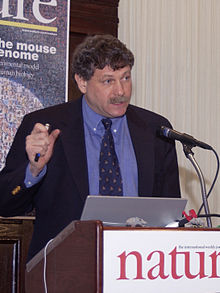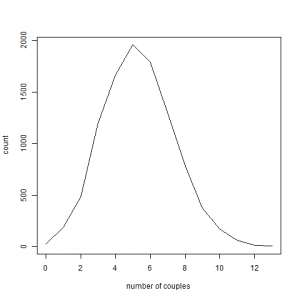
Breakdown of Trust
Berkeley mathematician Lior Pachter exposed Manolis Kellis once again in his recent post - ‘Pachters P-value Prize’. Previously he accused Kellis of fraud in a number of recent papers. This time the charges are of lesser degree of being stupid, but on an early and highly cited paper of Kellis with only two computational authors - Manolis Kellis and Eric Lander. Eric Lander is the founding director of Broad institute and co-chair of U.S. President’s Council of Advisors on Science and Technology.

While we were reading the highly interesting comments in Pachter’s blog, one of them caught our attention. It came from Pavel Pevzner, who built the SPAdes assembler and bioinformatics learning tool Rosalind with collaborators from Algorithmic Biology lab in Russia. Pevzner and Compeau are also the authors of ‘Bioinformatics Algorithms An Active Learning Approach’, which is being used as textbook in their Coursera course. Pevzner wrote -
Thank you Eric, Lior, Manolis, and everybody who provided comments on this blog. The KBL paper is now textbook material: just two weeks ago, we taught it to 1000s students in our Coursera Bioinformatics Algorithms class (http://coursera.org/course/bioinformatics2), and there will be a section on KBL in the 2nd volume of our Bioinformatics Algorithms textbook (http://bioinformaticsalgorithms.org) to come out in July 2015.
In view of the discussion here, I and my co-instructor Phillip Compeau have decided to make a break in the Coursera course and to ask students to spend a week reading KBL and related papers, thinking about the posts on the blog, and perhaps even submitting solutions for the P-value prize challenge :-) We have excellent students: 13% of them hold Ph.D.s, and 34% hold M.S. degrees. I hope they will contribute to the discussion in a meaningful and CONCILIATORY way. Even more importantly, I hope they will learn that they should be skeptical and double check everything I tell them in class.
Thank you again for providing a great learning opportunity for our students!
What we are seeing is rather ominous. By refusing to take care of rampant fraud and over-inflated claims in top journals, US/UK scientific establishment is creating an environment of complete breakdown of trust and end of scientific progress. Textbook is the primary method of summarizing and passing down scientific knowledge derived by one generation to another, and therefore the textbook authors take conservative approach in trusting materials from recent discoveries. If the abstract of a highly-cited and unchallenged decade- old paper in a major journal cannot be trusted, then what can be? In this context, our readers may remember that the main challenge to ENCODE’s hype came from Dan Graur, the author of a well-used textbook in molecular evolutionary biology. Larry Moran, the author of a leading biochemistry textbook, has also been quite critical of claimed made by ENCODE-leader Ewan Birney.
We also see quite a bit of double standards in how the scientists from different countries are being treated by US ‘scientific leaders’ and their followers. When the Japanese STAP episode surfaced, US media and blogs maintained by well-known scientists howled for rapid action. All top newspapers, including NY Times, covered the episode as a major scandal leading to suicide of the talented embryologist Yoshiki Sasai.
Scientist Who Had Claimed Stem Cell Breakthrough Resigns From Japanese Research Institute
In a blow to the prestige of Japans scientific community, a government- backed research institute accepted the resignation of one of its highest- profile scientists on Friday after she failed to replicate research results that were once hailed as a breakthrough in stem cell research.
In contrast, Pachter’s previous exposure of supposed fraud by Manolis Kellis got promptly covered up by the journal. ENCODE-crook Ewan Birney got promoted in EMBL and also became Fellow of Royal Society despite being exposed, and we received little support or mention from anyone in the genetics community or the media for exposing Barbara Frederickson’s PNAS paper connecting gene expression and happiness. Yoav Gilad’s criticism of mouse ENCODE got minimal response from the authors and Stamatoupolous did not bother to even do that to the Chinese paper disputing his duon claim.
The situation is far worse. Lander and his protege Manolis Kellis, who are incapable of doing basic stats, continue to draw humongous amounts of money from NIH for their ‘epigenome roadmap’ project that has been criticized by real scientists like Eric Davidson, Olivert Hobart and Mark Ptashne (check ‘The Conspiracy of Epigenome?’). They and their organization remain media darlings. Check Nature Promotes GWAS Madness to Study Mental Health or the following NY Times article published three months back -
Project Sheds Light on What Drives Genes
How does this conspiracy of genes work? asked Eric Lander, director of the Broad Institute, a genetic research center affiliated with Harvard and M.I.T., who is not an author of the new papers. This begins to connect the dots.
[skip]
To find the switches and figure out the circuits that control genes, researchers examined cells taken from healthy people and from patients suffering from a range of diseases including multiple sclerosis and diabetes. They also studied cells from different stages of life, including fetal cells and stem cells, which are present at the very earliest stage of development. Using those cells, investigators found millions of switches that control genes.
The results are published in 24 papers in Nature and other journals from Nature Publishing. The authors call it a road map to the human epigenome, a collection of chemical modifications of DNA that alter the way genetic information is used in different cells.
We now have an unprecedented view of the living human genome, said Manolis Kellis, a computer scientist at M.I.T. and a leader of the federally funded project.
Other media coverage of the ‘epigenome map’ junk science -
Forbes - In The Book Of Life, A Second Map Is Established
LA times - Roadmap Epigenomics Project reads between DNA’s genetic instructions
If you think the textbooks are being irreversibly damaged by inflated claims, imagine what happens to poor kids learning biochemistry directly from Lander’s own MOOC (online course). Larry Moran wrote in the sandwalk blog -
There’s a course at MIT (Boston, USA) called “7.00x Introduction to Biology
- The Secret of Life.” It’s a very popular MOOC (online course). Here’s the trailer for the course. In it, Eric Lander tells you that if you take his introductory biology course you will learn to think like a scientist and you will be able to understand the latest breakthroughs.
Here are the week one lectures that focus on biochemistry. I don’t have time to go through it all but check out the description of ATP beginning at 2:13. This is not how good teachers explain the importance of ATP in the 21st century but it is how it was taught 40 years ago.
Here’s the week two lectures (below). Check out the part at 2:08 where Eric Lander is talking about the “Energetics of Pathways.” See if you agree with his explanation and his references to entropy. Would you explain this without talking about forward and reverse rates?
The next section on “Tricks of Pathways” is very interesting. Keep in mind that he is discussing “tricks” that make glycolysis work but most of those reactions also work in reverse to make glucose (gluconeogenesis). This gets to be a problem with trick #2 at 2:25 when he says that an “unfavorable” reaction can be “pulled” in the right direction if the next reaction in the pathway is very favorable. This explanation was popular many decades ago but now we know that almost all the reactions are at equilibrium and ?G = 0.
My point is that just because MIT is a prestigious university and Eric Lander is a famous scientist, does not mean that this is the best undergraduate course and the best way to teach biochemistry. Some of my colleagues at colleges you’ve never heard of could do a much better job. Eric Lander could do a better job if he would just read a modern textbook.
-—————————————————-
In other news, we plan to submit the following entry to Pachter’s p-value challenge.
Bioinformatics for Married Couples
Our recent research uncovered new principles at the interface of evolution and psychology that will lead to better understanding of marriages. Therefore, we are submitting it to the most visible journal, which happens to be Lior Pachter’s blog.

Many American marriages end up in divorces. A Japanese-American scientist noticed the rising trend in 1970 and explained it based on socio-evolutionary theory in his book. He suggested that man, being a solitary animal, does not like to remain paired and that is the reason for the rising trend.
His model was never tested experimentally, but due to availability of large- scale analysis tools, we were able to do that in our lab. We conducted an experiment, where we placed 457 married couples (457*2 persons) in a room and picked 80 persons using an elaborate pipeline developed by us (see attached script). Strikingly, in 95% of cases (72/76), we got only one member of the couple and not the other, supporting the theory of mentioned Japanese scientist.
`
#!/usr/bin/perl
#
put 457 married couples in a room
#
each member of a couple is assigned a number
#
for($i=1; $i<=457; $i++)
{
push @room,”HUSBAND$i”;
push @room,”WIFE$i”;
}
#
pick 80 persons randomly
#
$N=@room;
for($i=0; $i<80; $i++)
{
#
randomly pick a person
#
$pos=rand; $pos=int($pos*$N);
#
find the number on it
#
$selected_person=$room[$pos]; $selected_person=~s/HUSBAND//; $selected_person=~s/WIFE//;
keep count
$count{$selected_person}++;
}
#
how many of those 80 will be couples?
#
$same=0;
foreach $key (keys(%count))
{
$same++ if($count{$key}==2);
}
print “$same\n”;
`
The above script (our elaborate pipeline) randomly picks 80 persons from a pool of 457*2. You can see the distribution of number of pairs in the following figure that is generated by running the script 10000 times.
